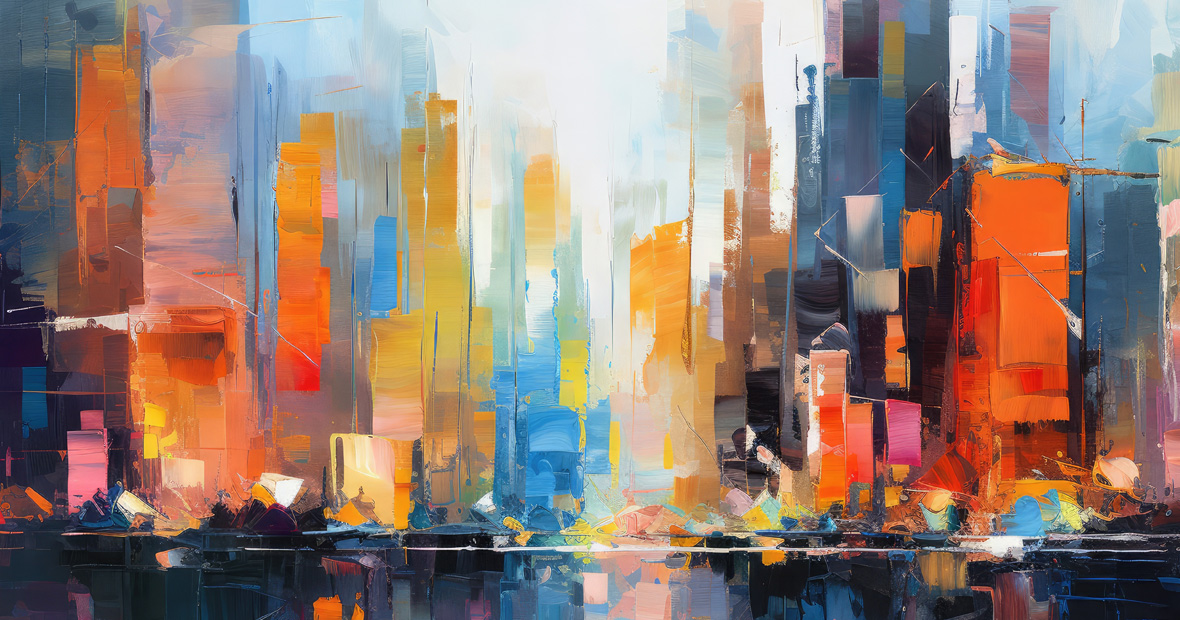
In the boundless realm of art, contemporary art is a vibrant, powerful force that shapes and reflects the spirit of our times. The daring innovation, bold experimentation, and global resonance of contemporary art allow it to wield significant influence over cultural, economic, and educational aspects of today's society. This site will delve into the dynamics of contemporary art, exploring its divergence from traditional norms, its vibrant expressions, its global and economic impact, its role in education, and potential future developments.
Contemporary Art: The Break from Tradition
Contemporary art, in a broad sense, pertains to artwork created during the late 20th century and onwards. It is defined by the artist's ability to glean from a melting pot of styles, techniques, and mediums to present a unique commentary on the zeitgeist of our era. In essence, contemporary art is inherently diverse, incorporating everything from graffiti art and installations to digital art and performance pieces.
The evolution of contemporary art began as a break from the strictures of traditional, academic art. Following the tumultuous periods of the World Wars, artists began to question and challenge established norms, paving the way for dynamic art movements. Notable among these are Abstract Expressionism, Pop Art, Minimalism, and Conceptual Art. These movements pushed the boundaries of artistic representation, experimenting with abstraction, popular culture, simplicity, and idea-based art, effectively broadening the horizons of what could be considered art.
The Vibrancy of Contemporary Art: A Kaleidoscope of Expressions
The hallmark of contemporary art is its vibrancy, defined by the artist's uninhibited use of colors, form, and technology to articulate diverse perspectives and ideas.
Contemporary artists often utilize bold, vibrant colors to convey powerful messages or evoke strong emotions. In contrast to the restrained, often monochromatic palette of traditional art, artists like Yayoi Kusama and Damien Hirst use color extravagantly to create visually stunning pieces that engage the viewer's senses.
Similarly, contemporary art experiments with unconventional forms and structures. Gone are the days when art was confined to the canvas or the chisel. Today's artists, like Anish Kapoor and Zaha Hadid, use innovative materials and sculptural techniques to disrupt our preconceived notions of space and form, producing artworks that are as intellectually provocative as they are aesthetically pleasing.
Moreover, the advent of technology has revolutionized the artistic landscape, providing artists with new tools to enrich their artistic expression. Digital art, video installations, and interactive art forms, utilized by artists like Marina Abramović and Olafur Eliasson, serve to blur the lines between the artist, the artwork, and the audience, creating immersive experiences that challenge the traditional, passive art-viewing paradigm.
The Global Impact of Contemporary Art
Contemporary art is not only significant for its innovative forms and vibrant expressions; it also carries a profound global impact. Artworks often address pressing societal issues, from climate change and migration to identity politics and human rights, fostering a global dialogue that transcends national and cultural boundaries. Contemporary art often functions as a universal language, mediating understanding, empathy, and awareness among diverse populations.
The Economic Significance of Contemporary Art
Beyond its aesthetic and sociocultural value, contemporary art holds considerable economic significance. The art market has witnessed a surge in the value of contemporary artworks, driven by both demand from collectors and the cultural prestige associated with owning unique pieces of art.
Art auctions and art markets play a vital role in determining the economic value of contemporary art. Powerhouses like Sotheby's and Christie's host prestigious auctions where contemporary artworks often fetch exorbitant prices. These platforms serve as barometers for the art market, influencing trends and setting precedents for pricing.
Contemporary art also presents a viable investment opportunity. Art investment funds and private collectors invest in art with the expectation of substantial returns, fueling the high demand for works by established and emerging artists alike. However, it's crucial to note that the art market is complex and somewhat unpredictable, making art investment a venture not without risks.
The economic aspect of contemporary art also involves supporting artists through grants, fellowships, and residencies. These support systems provide artists with the resources and platforms they need to create, helping to sustain the vibrancy and innovation of contemporary art.
Contemporary Art and Education
The presence of contemporary art in educational spheres plays a vital role in fostering creativity and critical thinking.
Art education, particularly with a focus on contemporary practices, encourages students to think outside the box, develop problem-solving skills, and engage with complex ideas. Contemporary art challenges students to question, interpret, and engage in dialogue, fostering a growth mindset.
Contemporary art is increasingly being incorporated into curriculums in schools and universities. By studying contemporary artists and their works, students gain insight into the diverse methodologies, materials, and concepts in play, enriching their understanding of the art world and its relation to broader societal themes.
Furthermore, public engagement with contemporary art is fostered through workshops, seminars, and art festivals. These platforms offer the public opportunities to learn about and engage with contemporary art, promoting cultural literacy and appreciation for the arts.
Looking Towards the Future: Predictions for Contemporary Art
As we look towards the future, contemporary art is expected to continue evolving and challenging boundaries, influenced by emerging technologies and global trends.
Digital media and virtual reality are poised to further transform the art world, offering exciting new avenues for artistic creation and engagement. Virtual exhibitions, digital artforms, and the rise of NFTs (non-fungible tokens) promise a future where art can be experienced and owned in novel ways.
Furthermore, emerging artists and styles continue to redefine the landscape of contemporary art. Artists like Amoako Boafo and styles such as Neo-expressionism hold immense promise, pushing the boundaries of artistic innovation.